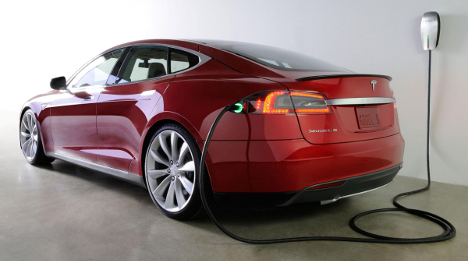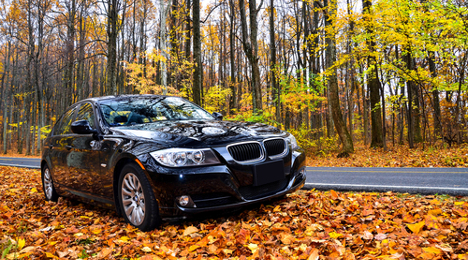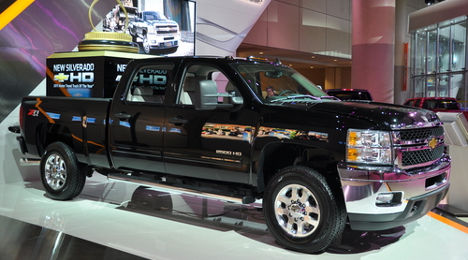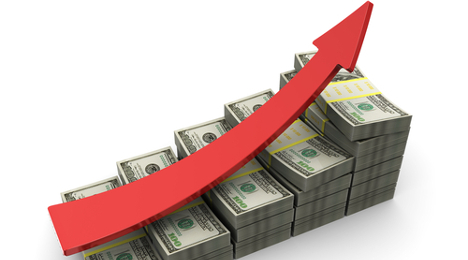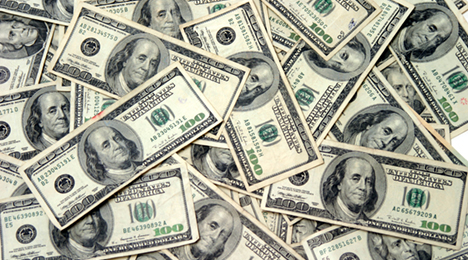Used-car sales in November were relatively static from year-ago figures, but eclipsed the 3 million mark and pushed year-to-date figures well above 38 million, according to data and analysis released by CNW Research.
Overall, there were 3.11 million used vehicles sold last month, a figure that includes sales by franchised and independent dealers as well as private parties.
This is up from 3.10 million used sales in November 2013, according to CNW. Through 11 months, there have been 38.74 million used-car sales this year, compared to 38.71 million in the same period of 2013.
Breaking the data down by seller, CNW said that franchised dealers sold 1.22 million used vehicles in November, a 1.43-percent gain, while independents were relatively consistent from November 2013 with 1.14 million used sales.
There were 752,369 private-party sales, which is off 0.9 percent year-over-year.
Experian Automotive released an analysis this week of the most prevalent areas of the country for leases and certified pre-owned sales.
Unsurprisingly, the areas with the highest rates of leases compared to overall new-vehicle registrations were larger metropolitan areas.
Top 5 Metropolitan Areas, New-Vehicle Lease Penetration (Experian)
- Detroit – 67.9 percent
- New York – 49.8 percent
- Flint, Mich. – 49.1 percent
- Youngstown, N.Y. – 46.5 percent
- Cleveland – 43.7 percent
On the used-vehicle side, the areas with the highest CPO sales rates, compared to overall vehicle sales, were smaller metropolitan areas, the top five of which are in Texas.
Top 5 Metropolitan Areas for Highest Percentage of Certified Used Vehicle Sales (Experian)
- San Angelo, Texas – 26.7 percent
- Victoria, Texas – 25.1 percent
- Corpus Christi, Texas – 24.4 percent
- Odessa, Texas – 24.3 percent
- Lubbock, Texas – 24.2 percent
The above results, which focused on data collected from Jan. to Sept. 2014 in areas with a minimum of 10,000 new-vehicle registrations (for the new-vehicle data) and certified used vehicles ranging in age from 0 to five years, goes to show that certain areas of the country can contain vastly different types of hot and cold spots for different sales methods.
“Not every market is the same,” said Brad Smith, Experian’s director of automotive market statistics. “Economic and social issues often drive sales. Detroit, for example, benefits from the presence of Chrysler, Ford and General Motors, as well as numerous suppliers and many friends and family programs. By gaining insight into consumer purchasing behavior in their market area, dealers and manufacturers can take more targeted actions with regard to managing their inventory, capitalizing on growth opportunities, gaining new customers and improving profitability.”
The analysis also revealed several other interesting points, according to Experian:
- MINI has the highest percentage of certified used vehicles compared to total vehicle registrations (minimum 100,000 vehicle registrations) at 32.7 percent.
- Ram was second, with 28.9 percent of vehicles sold being CPO, followed by Hyundai (28.3 percent), Mercedes-Benz (28.3 percent) and Kia (27.7 percent).
- Toyota Camry had the highest volume of CPO registrations, followed by Nissan Altima, Ford F-150, Ford Fusion and Chevrolet Silverado.
Tesla Motors management has been busy as of late, launching a leasing program, confirming reports of a future CPO program for the Model S, and making multiple announcements regarding new vehicles and upcoming models.
That business, though, didn’t translate to a successful third quarter monetarily.
The company reported last week it took a bit of a hit, with a third-quarter loss of $75 million, due in part to production costs backing what the company calls a “rising demand” for the Model S sedan.
Though Q3 revenue rose to $852 million, operating expenses spiked to over $290 million — hence the impressive loss for the quarter.
The company asserted revenue increases were driven by growth of Model S deliveries worldwide, an increase in regulatory credit sales, and an increase in powertrain sales to Daimler AG (Daimler) for the Mercedes-Benz B-Class Electric Drive.
That said, though costs may be up, demand and interest in the automaker's products are, as well.
The company sold a record 7,785 Model S sedans in the third quarter, and in a shareholder letter shared last Wednesday, chief executive Elon Musk and chief financial officer Deepak Ahuja outlined high expectations for the sedan.
Musk said the company plans to build a total of 35,000 Model S sedans this year, delivering 33,000 of those.
And in 2015, the automaker expects sales for this model to spike by 50 percent to almost 50,000.
During a Q&A session held last week to discuss financial results, Musk expressed his confidence this high number will be reached next year.
“I don't think 50,000 is going to be super hard because if you look at sort of how we're exiting the year in production and demand, I think 50,000 seems like a pretty solid number,” Musk said. “We don't want to overreach, but I think 50,000 is a pretty achievable number. That's more or less a modest extrapolation for where we will be at the end of this quarter.
“Let's just say that achieving 50,000 units of the Model S next year is going to be no problem,” Musk added later in the call.
That said, this assertion was met with some skepticism from analysts, who worry the company’s expansion may make things harder for the automaker in the years to come.
“I think the realities of the global automotive marketplace might be catching up to Tesla Motors. Hitting 500,000 sales a year is an awful difficult nut to crack when you have yet to sell 50,000,” said Jack Nerad, executive market analyst for Kelley Blue Book. “Ironically, as a manufacturer transitions from a niche player toward higher volumes, many things get more difficult instead of easier.”
Analysts also claimed Tesla needs to start ramping up sales significantly to justify its large market cap.
“Tesla needs to show they’re more than 35,000 sales units at this point, whether it’s with the Gigafactory, batteries, patents, etc. The Model X will definitely create plenty of buzz, but realistically, like the Model S, it won’t be a volume vehicle,” said Akshay Anand, analyst for Kelley Blue Book.
“And even if the Model III launches in 2017 around $35,000-$40,000, it’s going to be tough for it to be a volume vehicle like a Camry or Accord, considering most vehicles in that segment sell a few thousand units per month and call it solid. I’m curious to see how Musk addresses in detail his expected 500,000 units by 2020,” Anand continued.
And this growth may prove even more difficult since the company also announced last week it will be delaying production of the Model X crossover until fall of 2015.
However, the company has certainly been moving toward a larger, more traditional role in the industry, in light of its recent leasing and CPO announcements.
Back in April, Tesla began offering a Model S leasing program for small and medium-sized businesses through which qualifying customers are permitted to lease a Model S for 36 months, and the company expanded this offering to consumers in October.
As of September 30, the company had deferred $4.5 million of lease-related upfront payments, and the company recorded $1.1 million in lease revenue for the quarter.
Tesla leased 347 vehicles during Q3 and expects to ramp up leasing activity significantly over the course of Q4.
When asked whether the company is going to focus on the direst leasing route or rely more on banking partners, Ahuja said direct leasing will most likely play a role in the company’s future.
“I think we will continue doing some degree of direct leasing. It gives us flexibility and allows us to be in states where our banking partners cannot be there. I suspect we will probably double, from Q3 going into Q4, our direct leasing,” Ahuja said. “So it's still not going to be a big part of the capital required in relation to the cash we have. We always have the option to go and get some bank warehouse lines to fund, but we don't want to do it while there's no need.”
The company is also offering a resale value guarantee to customers who purchased a Model S in the U.S., which may serve to fuel its CPO program upon launch.
Under the resale value program, buyers have the option of selling their vehicle back to Tesla during the period of 36 to 39 months after delivery for a pre-determined resale value.
Musk and Ahuja reported in Q3, the company provided the resale value guarantee to 1,190 Model S deliveries in North America. To date, the company has provided the guarantee to approximately 8,800 customers in North America — rates which may bode well for the model’s future CPO program’s supply.
There’s been a lot of chatter recently in regards to the growing number of lease returns and its impact on used-car prices. It is true that there are a great deal of leases returning – an expected figure near 2.1 million vehicles for 2014 before the year is over, according to Manheim data.
There is a fear, in some minds, that too many lease returns are putting downward pressure on used-vehicle prices.
But that is just a small slice of the story, according to Swapalease.com’s executive vice president Scot Hall.
“It’s easy to point a finger at leasing when it comes to falling car prices simply because there has been a great resurgence in lease deals since the recession,” Hall said. “However, when you go from 10 million SAAR to 16 million SAAR, there’s a great resurgence all around, not just leasing. It’s difficult to congratulate leasing in helping you get to 16 million SAAR and then also say it’s hurting the industry by forcing falling auto prices.”
Swapalease.com also points out several other factors to consider when thinking about the over 2 million vehicles expected to return from their leases this year:
- Between 8-9 million trade-ins, overall, are expected in 2014 (per industry average)
- Leasing, according to previous numbers, will account for just 22.5 percent of vehicles coming back into dealerships this year
- Lease return vehicles (3-year-old) are actually helping to fuel the CPO recovery
What is your outlook on this topic? Let us know in the comments or tweet us @autoremkting.
The Costco Auto Program announced early this week the top brands requested in the month of October by Costco members.
So who came in at No. 1 last month?
Costco said that General Motors’ brands overtook both Toyota and Honda, following the commencement of the Costco GM Holiday Sales Event, which started Oct. 1 and runs through Jan. 2. This promoties a special offer available for 17 select 2014 and 2015 models at GM Supplier Pricing and additional benefits, including all qualifying manufacturer rebates and incentives, and either a $600 Costco Cash Card for Executive Members or a $400 Costco Cash Card for Gold Star and Business Members, for completing certain eligibility requirements.
“Taking the No. 1 spot as the most-requested brand by Costco members confirms that we made the right decision in partnering with the Costco Auto Program to offer the Costco GM Holiday Sales Event,” said James Bell, GM’s head of consumer affairs. “Together, we were able to collaborate on a unique savings opportunity, featuring a diverse vehicle selection, GM Supplier Pricing and a Costco Cash Card offer that members find valuable during the holiday season. We’re excited to be a part of it.”
The promotion saw a 33-percent increase over the same first 30 days last year, bringing in over 17,000 Costco members registered for the event. The four largest increases in average daily requests, according to the program, were for trucks, SUVs and luxury models, with the Chevy Silverado, GMC Sierra and GMC Acadia rounding out the top three most-requested vehicles. The following three top most-requested vehicles for the month were also GM products.
AutoNation began the fourth quarter with an 8-percent increase in new-vehicle sales as company dealerships turned 24,844 new models in October.
New-vehicle sales for AutoNation's operating segments were as follows:
• 7,497 for domestic, up 7 percent versus last October
• 11,917 for import, up 11 percent versus last October
• 5,430 for premium luxury, up 5 percent versus last October
On a same-store basis, AutoNation reported that new-vehicle sales in October rose 7 percent year-over-year.
AutoNation expects to report November new-vehicle unit sales on Dec. 3.
The certified pre-owned business is on track for another record year, and October proved to be a rather hot month for many brands. Here’s a rundown of how a few performed:
Starting with Hyundai, the automaker reported its best October ever for CPO sales, moving 8,421 CPO units for a 31.5-percent hike.
Through 10 months of the year, Hyundai has moved 79,674 CPO vehicles (up 24.9 percent), with 762 of its dealers having sold at least one certified vehicle.
Volkswagen also had its strongest CPO October, selling 7,825 vehicles for a 12.6-percent hike. Through October, it has sold 76,831 certified vehicles year-to-date, compared to 79,685 in the year-ago period.
The company has now sold more than 6,000 CPO units for 33 straight months, VW said.
Kia had 4,274 certified sales for the month, beating year-ago figures by 30.6 percent. Year-to-date, it has sold 40,247 certified vehicles for a 41.8-percent hike.
At Ford, its brands combined to move 22,912 CPO vehicles in October, with year-to-date sales at 226,543.
Breaking that down, Lincoln had 2,350 CPO sales in October and 21,762 through 10 months. There were 20,562 Ford/Mercury certified sales in October and 204,781 year-to-date.
For Mazda, its October certified were at 3,497, an increase of 5 percent year-over-year. In 10 months, its sales have climbed 15 percent to reach 35,768 CPO units.
Next up, Audi moved 3,964 CPO units in October. It has sold 38,506 certified vehicles year-to-date, against 32,556 through 10 months of 2013.
Volvo had 1,192 CPO sales in October for a 64-percent year-over-year leap. Year-to-date, it’s up 36.5 percent with 11,762 sales. In fact, in 10 months, Volvo already surpassed full-year 2013 CPO sales (10,199).
Moving over to Porsche, it said there were 1,050 U.S. Porsche Approved Certified Pre-Owned vehicle sales for the month, a 19-percent increase.
Mercedes-Benz USA said that Mercedes-Benz Certified Pre-Owned had 9,834 sales last month (up 29.2 percent), and it has moved 98,186 units year-to-date (up 22 percent).
At BMW North America, the BMW brand had used sales (including CPO and non-CPO used) of 15,272 for October, down 1.5 percent year-over-year. Through October, sales are at 164,455 (up 11.4 percent).
The MINI brand (again, including MINI NEXT certified pre-owned and non-CPO used) had 1,889 used sales in October (down 3.7 percent) and it has moved 20,954 units year-to-date (up 15.5 percent).
The increase in lease returns isn’t just helping franchised dealers shore up their used-car supply.
Apparently, it may also be leading to a lift in transaction prices for these dealers, according to the latest analysis on October used-vehicle sales from CNW Research.
“Transaction prices rose more than 16 percent at franchised dealership to $15,678 thanks to a growing inventory of late-model off-lease vehicles,” CNW president Art Spinella said in the report summing up last month’s used-car market.
“Total value of franchised sales (based on core transaction prices) rose to $19.45 billion, up by 18.7 percent compared to a year ago,” he added.
That likely comes as welcome news to franchised dealers, whose used unit sales were up 2.2 percent year-over-year in October but are essentially flat year-to-date through 10 months.
Throughout all channels (franchised and independent dealer sales plus private-party transactions), the total value of used sales in October was at $33.27 billion.
The average transaction price when considering all three sales types was $10,523, CNW said.
There were 3.16 million used-vehicle sales last month, a figure marginally better than October 2013 levels, according to CNW Research, which said year-to-date numbers through 10 months are essentially static with a year ago.
October’s monthly used sales figure beat year-ago numbers by 0.29 percent and fell 16.9 percent from September, a sequential decline not uncommon for this time of year.
Franchised dealers sold 1.21 million used units in October, a gain of 2.2 percent year-over-year. Independent dealers’ 1.04 million used sales were off more than 10 percent from October 2013, and there were 885,372 casual sales (up 12.5 percent).
Through 10 months, franchised dealers have sold 13.21 million used units, compared to 13.22 million a year ago. Independents have sold 11.64 million used cars, versus 11.96 million through October 2013.
There have been 10.78 million casual sales, up from 10.43 million in 10 months of 2013.
In the data set and analysis provided by CNW on Monday, firm president Art Spinella makes an interesting observation about the movement in used-car shopping numbers last month and its potential impact this winter.
“The number of used-car shoppers (including those who were considering either a new or used vehicle) slipped more than 6.8 percent versus a year ago, but rose by a similar amount versus September,” Spinella said. “The latter is interesting because total number of sales were down on a higher number of shoppers.
“Indication: Expect a strong January-March used-sales market because shoppers typically are two to three months away from actually making a purchase,” he added.
Penske Automotive Group’s quarterly conference call highlighted company records and third-quarter used sales increases. The group’s chairman, Roger Penske, also revealed some forward-thinking plans regarding company expansion and inventory strategy.
“Today, we’re 69 percent, our business, in the U.S., and 31 percent international,” Penske said. “I think you’ll see us, as we go forward, we’ll tend to go probably 60/40. I would say if you looked at over the next 12 to 24 months you could see that.”
Penske also believes that the current quarter will prove to be the time to get good deals on the wholesale side to fuel the company’s used sales.
Looking to the fourth quarter, the group took steps to cut its days' supply from 42 to 39. Doing so was "key," Penske said, "because we’re in the premium luxury side, and we have a number of the off-lease vehicles coming back.
"Our sale price, our cost of sale, is probably higher than the peer group … we wanted to move these vehicles from the standpoint of inventory, because traditionally, we know in the fourth quarter prices do deteriorate because a lot of the wholesalers are dumping a lot of their inventories,” he added.
“As we move into Q4, I think, in our case, we think it’s an opportunity for us; with more used cars on the market price, we’ll buy at market, and we’re going to try to sell at a point where we get a fair margin. Then we’ve got the F&I opportunity and the internal opportunity from a remand perspective,” he added.
Elsewhere in the company's operations, while also outlining hopes that the commercial vehicle side of his business will grow 5 percent to 10 percent over the next two or three years, Penske also hinted at the wealth of opportunities presenting themselves overseas.
“The vision, obviously, is to grow more internationally,” Penske said. “I think that that gives us balance, so that when we look at Spain, and when we look at Italy today, right out of the box they’ve been performing well, and we think there’s more opportunity there. Every manufacturer has knocked on our door in Europe now to say, ‘hey, we have an opportunity.’”
Penske said that he would like to keep his business focused on the premium/luxury side, but gestured that the company may have plans for further domestic expansion.
“I would say this, strategically, there might be, if we look at certain domestics here in the U.S., there are some domestic opportunities that have popped up for us that we’ll look at,” Penske said. “But to me, we’re going to pretty much stay in line as a premium/luxury line, volume foreign player and there’s no question that service and parts, when you think about commercial vehicles, will play a key part going into the future.”



